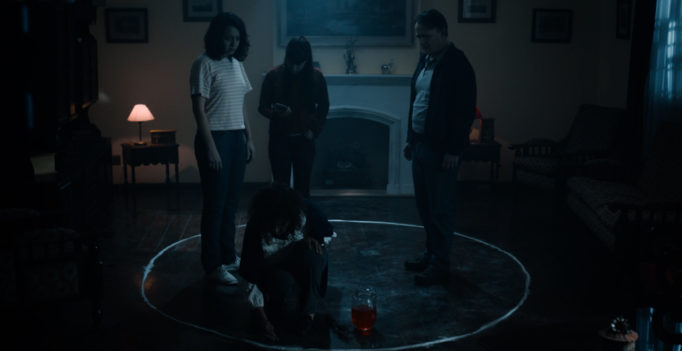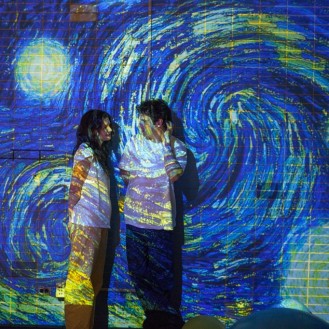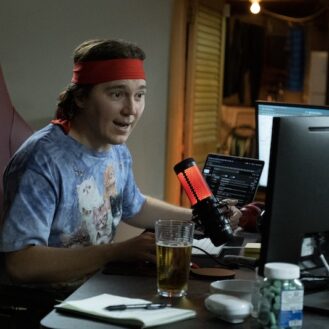If you’re looking for a movie that’s going to scare the pants off of you, Mauro Iván Ojeda’s The Funeral Home isn’t it. Only the most sensitive and lily-livered viewers will be genuinely frightened by this Argentinian tale of hauntings and family drama. But what it lacks in terror, The Funeral Home makes up for in moderately creepy weirdness and old-school, vintage visuals.
Estela (Celeste Gerez) and her teenage daughter Irina (Camila Vaccarini) have moved in with Etela’s new husband, Bernardo (Luis Machín), following the death of Irina’s father in a motorcycle accident. The old house is attached to Bernardo’s funeral home, which he inherited from his father, and is frequently visited by the spirits of the recently deceased. As the hauntings become increasingly violent, the family begins to worry that something more sinister is living among them.
One of the most refreshing things about this movie is how accepting the characters are of the supernatural phenomena around them. There are no exclamations of “but that’s impossible!” or “ghosts aren’t real!”. There isn’t a shred of the skepticism, that’s usually featured in North American supernatural horror films, to be found. Instead, Bernardo and his family have resigned themselves to the presence of spirits in their home, as though a moderate level of supernatural activity simply comes with the territory of the funeral business. It is only after the ghosts become agitated and infringe on the family’s space that they are seen as a problem large enough to warrant seeking the assistance of a medium.
Though the visual effects are strong, they are used rather too liberally. What we don’t see is almost always more frightening that what we do, a rule that The Funeral Home disregards completely at the halfway point of the film.
The Funeral Home’s B-movie horror aesthetics are fun, but the film never manages to finish what it starts when it comes to the plot and characterization. Many of the story elements introduced in the first act are abandoned as the film descends from a tense, psychological family drama (with ghosts) into a demonic gore-fest. For example, Estela’s dead husband is firmly established as abusive but neither Estela nor Irina’s character arc in the movie has them dealing with this reality. Similarly, Bernardo’s relationship with the spirit of a dead girl is creepy and disturbing, but never explored fully.
Though I enjoyed Machín’s performance, Bernardo’s character didn’t work for me. At points, it seems as though he is intended to be a sympathetic figure trapped in a loveless marriage and hampered with a stepdaughter that does not return his affection. However, there is a sexual element to his relationship with the ghost-child that makes him not just merely unlikable, but downright threatening. Rather than investigating this tension and negotiating the incongruity, The Funeral Home refuses to confront the implications that this behaviour has for Irina and Estela’s safety – or even what it may suggest about Bernardo’s intentions in marrying Estela in the first place.
It did not escape my attention that these plot points that lack resolution also involve the abuse of women and girls. It is disappointing, though not surprising, to see this kind of abuse treated as spooky seasoning, rather than something worthy of legitimate interrogation. The bizarre, subtle, and unnerving details of the family’s relationships are presented as red herrings rather than serious elements of the story in need of development and resolution.
Maybe that wouldn’t matter so much if this were a genuinely terrifying movie that was driven by atmosphere and tension, but The Funeral Home isn’t that kind of film. With so much of the first half spent on establishing these characters and their dysfunctional family dynamic, I felt short changed.
**********
Do You Tweet? Follow These Tweeple:
Shannon Page: @ShannonEvePage





Be the first to comment